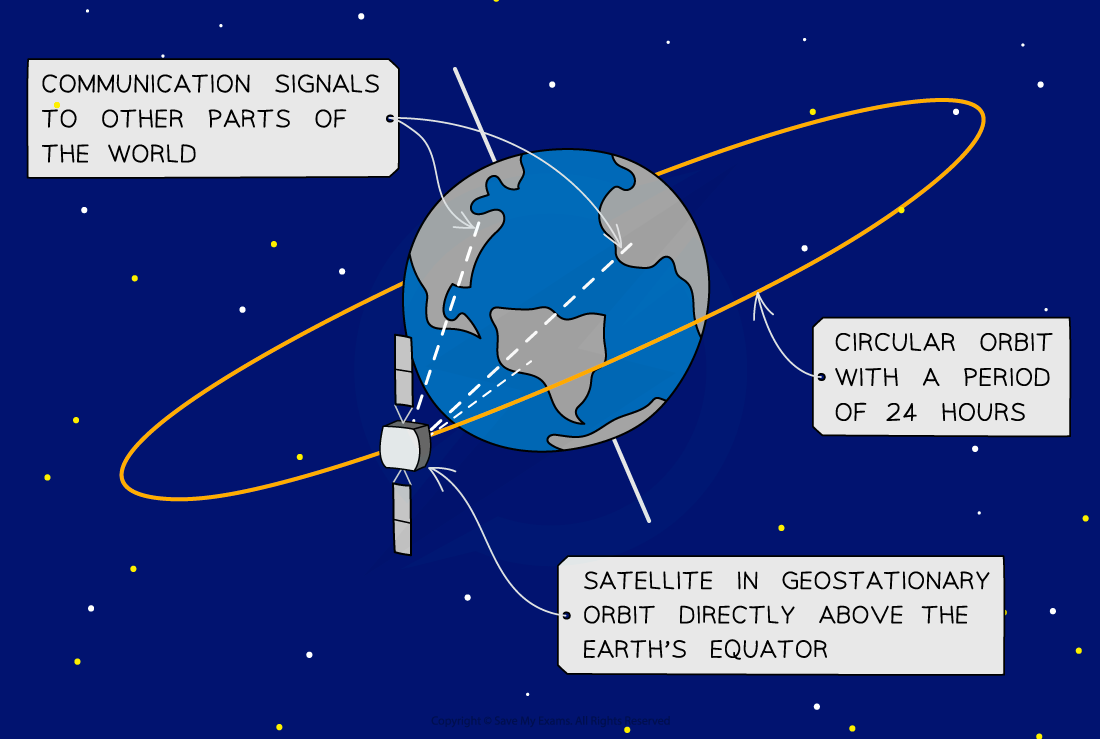Orbiting Bodies (Oxford AQA IGCSE Physics): Revision Note
Exam code: 9203
Orbiting Bodies
There are many orbiting objects in our solar system and they each orbit a different type of planetary body
Orbiting Objects or Bodies in Our Solar System
Body or object | What it orbits |
|---|---|
Planet | Sun |
Moon | Planet |
Comet | Sun |
Asteroid | Sun |
Artificial Satellite | Earth |
Orbits of artificial satellites
Artificial satellites are man-made satellites used for communication
Artificial satellites can be put into a geostationary or (low) polar orbit
Orbital paths of satellites around the Earth

Geostationary satellites
Geostationary satellites orbit above the Earth’s equator
The orbit of the satellite is 24 hours
At a height of 36 000 km above the Earth’s surface, much higher than polar satellites
Used for radio and telecommunication broadcasting around the world due to its high orbit
Geostationary orbit

Polar satellites
Polar, or low orbit, satellites orbit around the Earth’s north and south poles
These orbit much lower than geostationary satellites, at around 200 km above sea level
Used for monitoring the weather, military applications, and taking images of the Earth’s surface
There is a much shorter time delay for signals compared to geostationary orbit signals
The signals and images are much clearer due to the lower orbit
However, there is limited use in any one orbit because more than one satellite is required for continuous operation
Polar orbit


Unlock more, it's free!
Did this page help you?